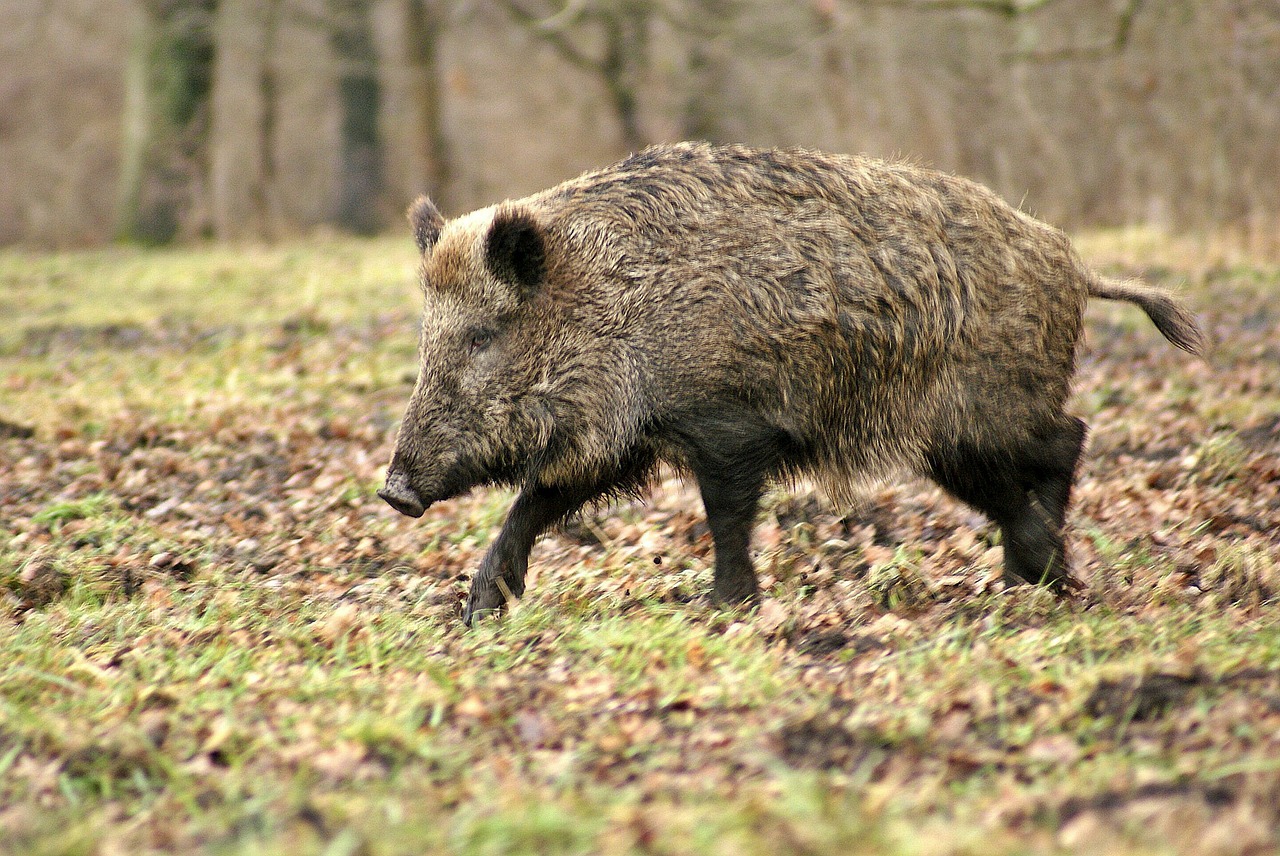As African swine fever stalks the EU’s biggest livestock population, researchers aim to deploy a vaccine to halt the disease’s spread and shield millions of animals.
The fate of millions of pigs in Europe could be decided this coming winter in a Hungarian forest. There, EU researchers plan to test a vaccine against African swine fever on wild boar.
African swine fever, or ASF, is a viral disease that threatens wild and domestic pigs across Europe. With no vaccines or cures for ASF, outbreaks usually kill infected pigs and often prompt targeted slaughters of domestic herds to prevent the illness from spreading to other farms.
Big test
In the yet-to-be selected Hungarian woods, the researchers intend to lay down morsels of bait laced with an experimental ASF vaccine developed with EU funding. The aim is to immunise around 300 wild boar.
‘The biggest problem in Europe right now is infected wild boar,’ said José Manuel Sánchez-Vizcaíno, a professor of animal health at Complutense University of Madrid in Spain. ‘If we reduce the disease in wild boar, we probably don’t need to vaccinate domestic pigs.’
Sánchez-Vizcaíno leads a research project called VACDIVA that produced the experimental ASF vaccine with the help of more than €9 million in EU funding. That represents around 90% of the total cost of the project, which is being extended until July 2024 from an original end date of this month.
While ASF is harmless to people, it puts Europe’s multibillion-euro pig industry at risk. The EU has around 130 million pigs – its largest livestock category – with the biggest populations being in Spain, Germany, France, Denmark and the Netherlands.
ASF can spread via wild boar, people or even cured meats. This is because it can survive on clothes, boots and wheels as well as in pork products such as ham and sausages that get discarded by people and then eaten by boar.
Westward spread
“
The biggest problem in Europe right now is infected wild boar.
The disease is spreading westward in Europe, with the first cases on pig farms in Bosnia and Herzegovina and Croatia discovered in June 2023. Affected countries also include Bulgaria, the Czech Republic, Germany, Greece, Italy, Latvia, Poland and Romania.
In addition to being a deadly menace to pigs, ASF is an economic threat to the EU’s pork producers. Animal deaths reduce the value of the business and outbreaks involve costly restrictions, including on trade.
‘Areas affected by ASF suffer significant financial losses,’ the European Food Safety Authority said in May 2023.
The EU is the world’s leading exporter of pigmeat and second-biggest producer – after China – of pork.
China has had to cull more than 1 million pigs since August 2018 in an effort to halt the spread of ASF.
Madrid breakthrough
The experimental vaccine of VACDIVA, an international collaboration involving laboratories in Europe, Africa and China, has emerged after being tested in a research facility in Madrid.
Wild boar kept there were fed the vaccine and proved to be protected against ASF.
The Hungarian trial will make it possible to test wild boar and identify how many consumed the vaccine bait. Without such insight, researchers would be unaware how a vaccination campaign is progressing.
The hope is for a vaccine to be widely available around the end of 2024 or in 2025.
The path to this point was far from direct, with previous EU-funded research part of efforts to make advances.
Shape-shifting virus
Scientists have long known that only a live virus would work as a vaccine against ASF. But when a weakened virus was used to vaccinate pigs in Spain and Portugal in the 1960s, the animals sometimes became extremely sick.
This was because the virus shape-shifts as it replicates in animals, sometimes becoming weaker and sometimes getting stronger.
Part of the story is that ASF is caused by a very large DNA virus – with 180 genes – compared with, say, 10 in the Covid-19 virus. This allows ASF to take on new guises in animals.
‘For long periods of time we were not even looking for a vaccine because we knew the problems that a bad vaccine can cause in animals,’ said Sánchez-Vizcaíno.
Then something happened. In the last decade, advances in genetics have given scientists far greater insights into the virus and the means to tweak its genome.
Researchers wielded new gene editing tools to pare down the viral DNA until only the bare bones were left. They created a virus that was a shell of its old self, with a handful of genes chosen immunologically to poke pigs enough to give them immunity.
That’s the vaccine that will feature in the planned trial in Hungary. The same vaccine at lower doses should work for farm pigs if the need arises.
‘Wild boars are more resistant to African swine fever, so we can use higher doses of vaccine for them,’ said Sánchez-Vizcaíno.
Ports of entry
While spreading in Europe in 2023, ASF has so far stayed out of countries such as France, Spain or Portugal.
But it would only take a person disembarking from a ship in any of those nations to throw away a contaminated ham sandwich for a boar to eat it and become infected.
“
There is no fortress Europe when it comes to animal disease.
‘There is no fortress Europe when it comes to animal disease,’ said Dr Ludek Broz, head of the department of ecological anthropology at the Institute of Ethnology of the Czech Academy of Sciences in Prague.
‘And it is difficult to understand the spread of this disease without taking humans into account.’
Broz studies ASF and its intersection with hunters and veterinarians as part of another EU-funded project. Called BOAR, the research initiative runs for five years through June 2025.
The most recent arrival of ASF into Europe happened in 2007 in Georgia when waste food from a ship was given to backyard pigs in the port of Poti. The virus then spread into Russia and westwards, reaching the EU in 2014 at the Lithuanian border with Belarus.
The disease itself has existed for millennia in Africa, among worthogs, usually without causing symptoms. It was first identified in Kenya in the 1920s when it sickened farm pigs that European settlers brought with them.
‘The story of African swine fever is a colonial story,’ said Broz.
All aboard!
Among other things, he’s focusing on attitudes toward the disease mostly among hunters and veterinary authorities.
When Broz travelled to Ukraine earlier in 2023, he noticed that at the border with Slovakia most of the checks were for illegal foodstuffs. Hunters also have been recruited by vet authorities into helping stop the disease.
Often hunters are tasked with collecting wild boar carcasses because they can be the source of the virus for living boar. This was a question that researchers disagreed about until recently.
‘If you leave a carcass of a pig and a deer in the forest, wild boar will eat only the deer,’ said Broz. ‘But after around two months, at a certain state of decomposition, wild boar will start to eat the boar carcass.’
This is a major challenge because the ASF virus can survive in carcasses for many months at least.
Broz is also interested in public attitudes towards an ASF vaccine, especially in light of assertions by some segments of western society during the Covid-19 pandemic questioning the efficacy and safety of such a health measure for people.
He hopes BOAR can add insights into the attitudes of people and contribute to stopping ASF rampaging destructively through Europe.
Research in this article was funded by the EU via the European Research Council (ERC). If you liked this article, please consider sharing it on social media.
O artigo foi publicado originalmente em Horizon, the EU Research and Innovation Magazine.





















































